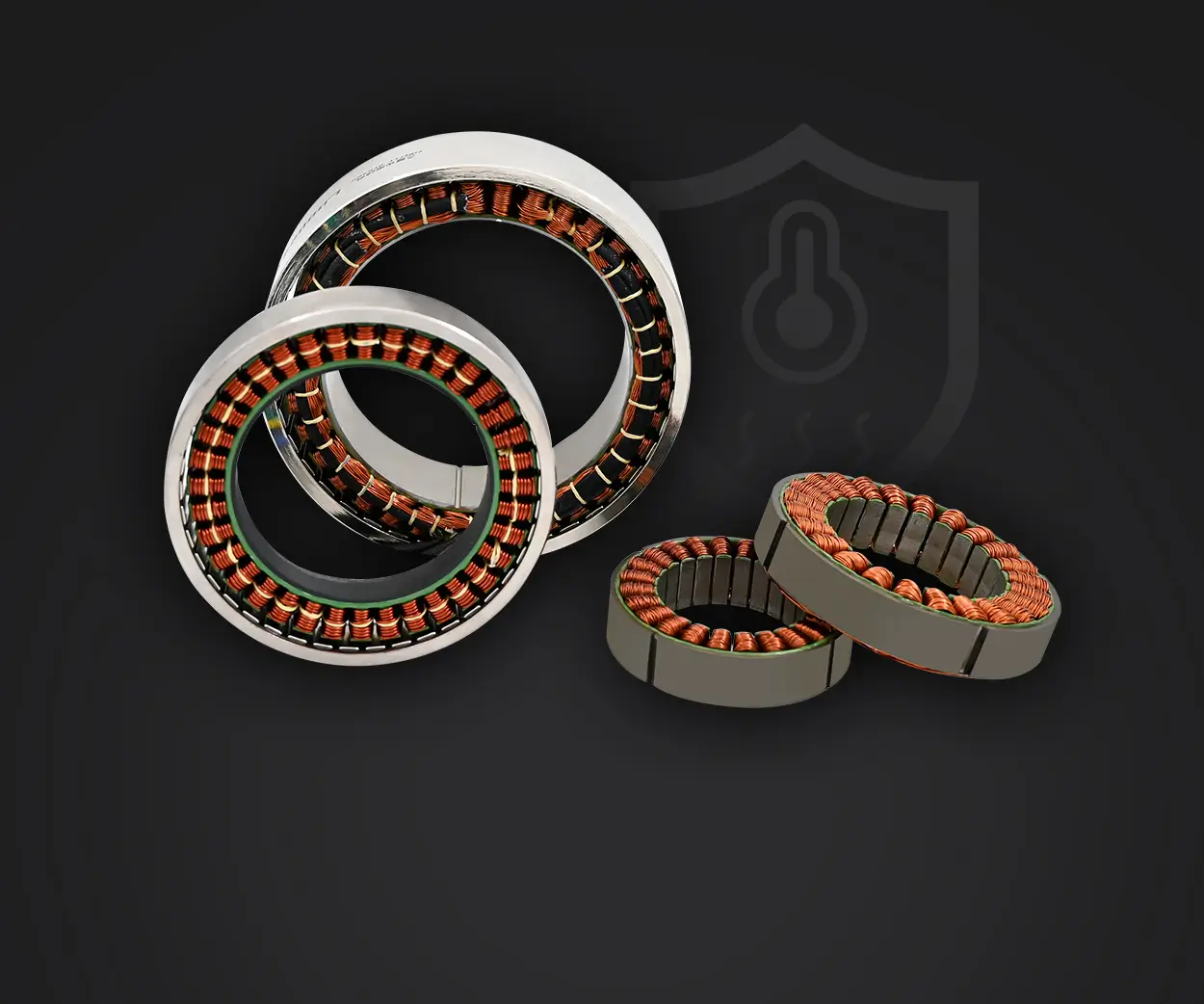In the rapidly evolving world of industrial automation, the quest for more precise, reliable, and energy-efficient motor systems continues to drive innovations. Among the towering advancements in this realm stands the AC Permanent Magnet (PM) servo motor — a marvel that combines cutting-edge electromagnetic design with sophisticated control systems to deliver outstanding performance across a broad spectrum of applications.

A New Era in Motion Control
Traditional motors, like induction and brushed DC variants, have served industries well for decades but often come with limitations—high energy consumption, maintenance needs, or less-than-ideal control precision. Enter the AC PM servo motor, a device that has redefined what’s possible in motion control. Its compact size, high torque density, and exceptional accuracy make it the go-to solution for applications that demand both finesse and strength.
At its core, the AC PM servo motor operates on the principles of electromagnetic induction, but with a twist: permanent magnets embedded directly into the rotor. This unique configuration creates a highly efficient magnetic circuit, which results in stronger magnetic flux and, consequently, higher torque outputs with less electrical power. The design inherently lends itself to superior dynamic response, crucial in applications like robotics, CNC machinery, and packaging systems, where milliseconds matter.
The Heart of the Technology
To truly appreciate why AC PM servo motors are so effective, it helps to understand how they differ from other motor types. Unlike induction motors, which rely on electromagnetic induction to generate torque, AC PM motors use permanent magnets on the rotor, eliminating the need for rotor current and thus reducing losses. This means enhanced efficiency and reduced heat generation — significant benefits for long-term operation and energy savings.
Moreover, the advanced control strategies employed with AC PM servo motors, such as vector control or field-oriented control, allow for precise adjustment of torque and speed at unprecedented levels. This fine-tuned control opens up new possibilities in automation where such accuracy directly translates into higher product quality and process reliability.
Design and Construction
The structure of an AC PM servo motor is meticulously engineered for peak performance. It features a stator with three-phase windings that generate a rotating magnetic field. The rotor contains high-grade permanent magnets—often made from rare-earth materials like neodymium—that are positioned to maximize flux linkage and magnetic stability.
Manufacturers often integrate sensors and digital interfaces with these motors to enable sophisticated feedback mechanisms. These sensors critically monitor rotor position, ensuring that the control system can apply the right amount of current in real-time to maintain optimal torque and speed regulation. The result is a highly responsive system that can adapt instantaneously to changing demands.
Advantages Over Conventional Motors
One may wonder what sets AC PM servo motors apart in practical terms. Here are some compelling advantages:
High Efficiency: Thanks to the permanent magnets and optimized magnetic circuits, these motors convert electrical energy into mechanical work far more effectively than traditional counterparts. Precision Movement: With advanced control algorithms, AC PM servo motors can achieve sub-millimeter positioning accuracy, essential for delicate manufacturing or assembly tasks. Compact and Lightweight: The high torque-to-size ratio means that systems can be designed smaller and lighter, which is often a critical factor in robotics and aerospace applications. Low Maintenance: Fewer moving parts and reduced heat generation translate into lower upkeep costs—ideal for 24/7 production environments. Energy Saving: Their efficiency helps reduce power bills and facilitates greener manufacturing practices.
Applications Brightening the Future
The adoption of AC PM servo motors isn’t limited to traditional industries. They are becoming the backbone of futuristic innovations, including autonomous vehicles, precision agriculture, and even advanced medical devices. Their ability to deliver high torque at high speeds with minimal lag makes them invaluable in settings where real-time responsiveness is vital.
For example, in robotics, AC PM servo motors enable humanoid robots to perform fluid, natural movements, mimicking human dexterity better than ever before. In the realm of aerospace, their lightweight structure helps in designing more fuel-efficient aircraft systems. Meanwhile, in manufacturing, these motors drive robotic arms that assemble tiny electronics with remarkable speed and accuracy, pushing productivity to new heights.
Navigating Challenges and Solutions
Despite their impressive features, AC PM servo motors are not without challenges. The cost of high-grade permanent magnets can be significant, and in some high-temperature environments, maintaining magnetic integrity requires additional design considerations. Engineers continually innovate to address these issues by developing magnets with improved temperature resistance and exploring alternative magnetic materials.
Control complexity also necessitates sophisticated electronics and software, which may initially increase system costs and design time. However, these investments pay off through enhanced performance, leading to lower operational costs over the long term. As digital control systems become more accessible and affordable, the barrier to deploying AC PM servo motors diminishes further.
rest assured, I will provide the second part shortly, focusing on real-world examples, future trends, and a deeper dive into the technological innovations shaping the evolution of AC PM servo motors.
Leveraging innovations in modular drive technology, Kpower integrates high-performance motors, precision reducers, and multi-protocol control systems to provide efficient and customized smart drive system solutions.




































